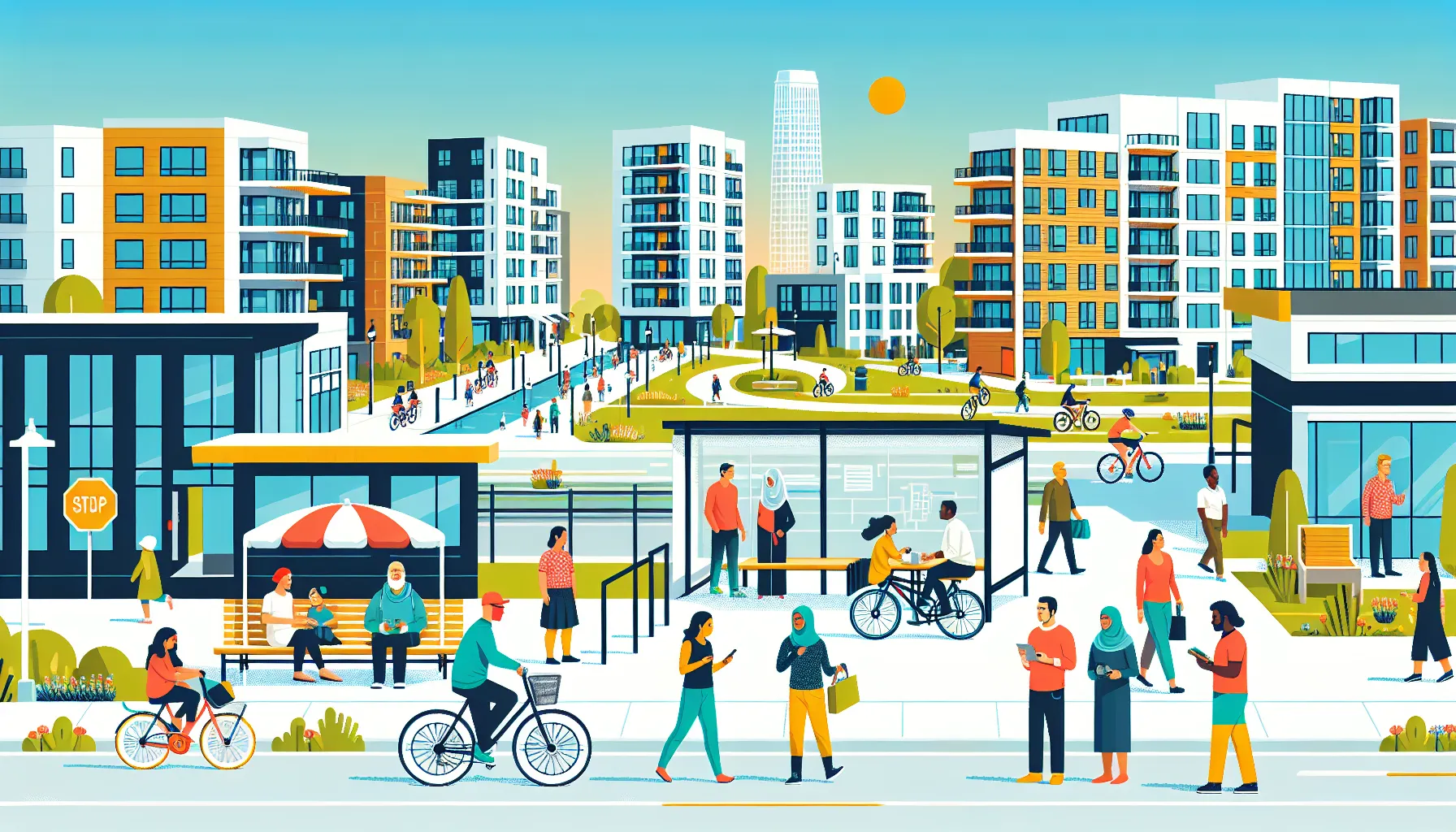Key Takeaways
- Redwood City’s rental market shows significant variation by neighborhood and property type, with one-bedroom apartments averaging $2,600 and single-family homes above $4,500 per month.
- Rental prices have seen modest year-over-year increases—up 2% for apartments and 1.5% for single-family homes—reflecting steady demand and localized market shifts.
- Key factors influencing rent rates include proximity to transit, top-rated schools, local job opportunities, property amenities, and neighborhood desirability.
- Effective rent rate analysis uses a combination of online data tools and in-person market evaluations to provide accurate pricing insights for both renters and landlords.
- Renters benefit from comparing up-to-date market averages and vacancy rates to find fair deals, while landlords should regularly benchmark rates, upgrade amenities, and refine marketing strategies to stay competitive.
Finding the right rent price in Redwood City can feel overwhelming, especially as the market shifts year after year. I know how important it is for property owners and renters alike to understand what’s driving rates. Are you curious about how your rental compares or wondering if now’s a good time to make a move?
Redwood City’s vibrant neighborhoods and steady demand mean prices rarely stand still. With so many factors at play—location, amenities, and local trends—it’s easy to feel lost. I’m here to break down the numbers and trends so you can make informed decisions. What questions do you have about rent rates in Redwood City? Let’s explore the facts together.
Overview of Rent Rate Analysis Redwood City
Rent rate analysis in Redwood City compares local rental prices using recent market data, property types, and neighborhood trends. I focus on numeric indicators like average rent, vacancy rates, and listing durations to help you understand the current pricing environment. This method helps owners and renters gauge fair market values for various properties—examples include single-family homes, apartments, and condos.
Looking at historical pricing trends, I track shifts in rent over quarters or years, helping spot periods of higher demand or price adjustments. Did you notice changes in your neighborhood’s rental landscape this year, or have you seen new developments drive up prices nearby?
I study the influence of location—proximity to transit, schools, and major employers matters. Properties closer to Caltrain stations or downtown centers often command premium rates. Have you compared rents in neighborhoods like Redwood Shores or Mount Carmel?
Amenities play a decisive role. Listings with on-site laundry, parking, or upgraded interiors tend to lease faster and at higher prices. Are you searching for a specific feature or benefit in your next property, or evaluating how upgrades could impact your returns?
Vacancy rates and tenant turnover impact both stability and pricing. Areas with lower vacancy rates commonly reflect strong demand. Would knowing the latest occupancy trends help you make better decisions?
By reviewing these aspects together, I paint a clear backdrop for understanding how Redwood City’s rental market operates. What questions are on your mind as you think about rent rates in your part of the city?
Current Rental Market Trends in Redwood City

Redwood City rental prices show meaningful differences across neighborhoods and property types. I see data highlight both stability and sudden shifts, reminding me that careful attention helps both owners and renters plan wisely. Do you wonder how Redwood City’s rental costs stack up in your area?
Average Rent Prices by Property Type
I track rent averages to clarify current costs. One-bedroom apartments average $2,600 per month, though properties near transit or downtown command higher rates. Two-bedroom units rent for about $3,400, with larger apartments sometimes exceeding $4,000, especially if new or recently remodeled. Single-family homes often list above $4,500, depending on size and location. Condos usually fall between apartment and home prices, averaging $3,700 monthly. Do these figures reflect what you’ve seen in your search?
| Property Type | Average Monthly Rent (USD) |
|---|---|
| 1-Bedroom Apartment | $2,600 |
| 2-Bedroom Apartment | $3,400 |
| Condo | $3,700 |
| Single-Family Home | $4,500+ |
Year-over-Year Rent Changes
Year-over-year, Redwood City rental prices increased 2% for apartments and 1.5% for single-family homes as of the latest data. I’ve noticed rents dipped slightly in early 2023 but regained momentum by year-end. Shorter average days on market point to growing demand, especially for well-maintained properties with modern amenities. Have you noticed trends changing for your building or neighborhood over the past year?
| Property Type | YOY Change (%) |
|---|---|
| Apartments | +2.0 |
| Single-Family Homes | +1.5 |
Redwood City’s rental market rewards those who stay informed and adjust quickly. Is there a trend or question about local prices that affects your rental decisions?
Factors Influencing Rent Rates in Redwood City

Rent prices in Redwood City shift for many reasons. I’ve seen trends that help explain why asking rents are rising in one area but holding steady in another. Are you wondering why one neighborhood seems pricier or more competitive than the next? Let’s look at the main contributors.
Economic and Job Market Impact
Economic conditions and local employment opportunities significantly influence rent rates in Redwood City. Major employers—like tech companies and healthcare organizations—attract new residents, which raises demand for housing. More demand often means higher prices, especially near business districts or transit hubs. During periods of job growth, landlords may increase rents faster, while uncertainty or layoffs can lead to smaller increases or even discounts. Have you noticed rent changes after a large employer opened or closed an office nearby?
Neighborhood Comparisons
Neighborhood differences directly affect rent prices in Redwood City. Properties close to downtown and Caltrain stations usually command higher rents—think $2,800 for a one-bedroom versus $2,600 in less central areas. Areas with well-rated schools, parks, and lower crime rates see stronger interest and can support higher rents. Meanwhile, older buildings or those farther from workplaces often have lower price tags. Which neighborhoods are you comparing as you try to find the right fit? Small details like proximity to shopping or access to major roads can add up, so it’s worth taking a closer look when evaluating your options.
Tools and Methods for Rent Rate Analysis

Rent rate analysis in Redwood City relies on a mix of online resources and in-person insights. If you’ve ever wondered how to gain an accurate picture of local rental prices, these tools can bring more clarity to your decision-making.
Online Data Sources
Online data sources give me access to current rental rates, historic price changes, and neighborhood trends quickly. Real estate platforms and listing websites collect large datasets, showing real-time rental listings and averages. I check rental market reports for specific numbers; for example, recent data shows one-bedroom apartments in Redwood City averaging $2,600. Online dashboards and public databases let me compare prices by property type and location. Are there particular features or neighborhoods you’d like to compare? I use these digital tools to map trends, analyze vacancy rates, and identify where prices are rising or cooling. These sources offer a fast way to spot patterns, but sometimes online averages can miss details about condition or amenities.
In-Person Market Evaluation
In-person market evaluation helps me interpret online data with real context. I visit open houses and rental showings to assess how property condition, presentation, and amenities influence price. I talk with local owners and tenants to get real feedback about demand and lease terms. Touring neighborhoods lets me see which streets attract more interest due to proximity to schools, parks, or transit options. Have you found any surprising differences between advertised and actual rental conditions when searching? Combining what I learn onsite with digital insights allows for more accurate rent estimates. In-person checks reveal factors that numbers alone may overlook, making the analysis more reliable for real decisions.
Practical Implications for Renters and Landlords

Rent rate analysis in Redwood City affects everyday decisions for both renters and property owners. With rents rising and market trends shifting, understanding these patterns helps you make thoughtful, informed choices. Have you noticed changes in your neighborhood rent prices or found it hard to decide what’s fair?
Tips for Renters
Finding a rental that fits your budget calls for up-to-date information. Recent averages show one-bedroom apartments at $2,600, while two-bedrooms reach $3,400. Single-family homes often list above $4,500. Comparing these against your own search gives you a baseline and helps you spot overpriced listings. Checking local vacancy rates and time-on-market data also reveals how much leverage you have in negotiations. Are you watching for seasonal fluctuations or tracking price shifts month to month? Visiting open houses lets you see property condition firsthand and talk with neighbors, which online listings can’t replace. If you’re weighing your next step, are you considering which amenities and locations make the most sense for your daily needs?
Strategies for Landlords
Setting the right rent helps balance profit and long-term tenant satisfaction. I use average rent data—such as the 2% annual increase for apartments and 1.5% for single-family homes—to keep rates in sync with the broader market. Have you compared your rates to similar properties nearby? Factoring in vacancy rates, which change by neighborhood and season, shows where you might adjust to stay competitive. Regularly inspecting properties and offering in-demand amenities often leads to higher retention and fewer costly turnovers. For marketing, detailed listings and effective digital advertising reach more prospects, quickly filling vacancies. When pricing or advertising your rental, do you check how similar homes perform in your area or talk with tenants about their experience?
Conclusion
Redwood City’s rental market keeps evolving and staying informed is key for both renters and property owners. I know that understanding the latest trends and using a mix of online tools and real-world insights can make a big difference when it comes to setting or finding the right rent.
If you’ve got questions about your neighborhood or want to dig deeper into specific rent rates feel free to reach out. I’m always here to help you navigate the Redwood City rental landscape confidently.
Frequently Asked Questions
What factors most influence rent prices in Redwood City?
Rent prices in Redwood City are mainly influenced by location, property type, amenities, and proximity to business districts or good schools. Local employment trends, especially in tech and healthcare, also impact demand and pricing.
How do average rent prices differ by property type?
On average, one-bedroom apartments rent for about $2,600 per month, two-bedrooms for $3,400, and single-family homes often list above $4,500. Prices vary based on neighborhood, amenities, and property condition.
Has the rental market changed recently in Redwood City?
Yes, rental prices have increased year-over-year—by 2% for apartments and 1.5% for single-family homes. The market experienced a brief dip in early 2023 but has since seen renewed demand.
What neighborhoods tend to have higher rental rates?
Neighborhoods closer to downtown, major transit hubs, and top-rated schools typically command higher rental rates. Areas with more amenities or near major employers also see elevated prices.
How can I determine a fair rent price for my property?
Use online resources to compare listings in your area by property type and features. Combine this with in-person evaluations, such as open houses, to assess actual property conditions and demand.
What should renters look for when searching for a place in Redwood City?
Renters should compare current listings to neighborhood averages, consider commute times, and assess local amenities. Staying informed about market trends helps secure a rental that fits both budget and lifestyle.
What tools are best for analyzing rental rates in Redwood City?
Online platforms with current market data, neighborhood comparisons, and historical trends are valuable. In-person visits offer insights into property conditions and active demand that online data might miss.
How can landlords set competitive rents and reduce vacancy?
Landlords should analyze local vacancy rates, compare with similar properties, and offer in-demand amenities. Regular property upkeep and fair pricing help attract tenants and enhance retention.
